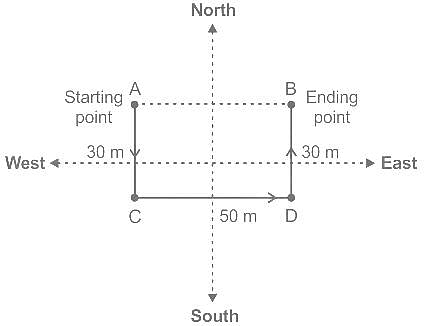APSC JE CE Paper 1 Mock Test - 1 - Civil Engineering (CE) MCQ
30 Questions MCQ Test APSC JE CE Mock Test Series 2024 - APSC JE CE Paper 1 Mock Test - 1
Directions: Each of the following consists of a question and two statements numbered I and II given below it. You have to decide whether the data provided in the statements are sufficient to answer the question.
Six persons – F, G, H, I, J and K, each earn a different amount of money. Who earns the maximum?
Statement I: I earns more than only two persons. J earns more than K but not maximum. G earns more than only F.
Statement II: K earns less than only two persons. G earns more than F but less than I. I earns less than K. J earns less than H.
Statement I: I earns more than only two persons. J earns more than K but not maximum. G earns more than only F.
Statement II: K earns less than only two persons. G earns more than F but less than I. I earns less than K. J earns less than H.
Direction: Read the following passages carefully and answer the question that follows.
The ancient Harappan Civilization emerged, flourished and collapsed under a steadily weakening monsoon, according to new research findings, that scientists say, provide the strongest evidence yet to link its risk and fall to changing climate. A team of scientists has combined multiple sets of date to show that weakening monsoon and reduced river water initially stimulated intensive agriculture and urbanisation, but later precipitated the decline and collapse of the subcontinent's earliest cities. The scientist said their research also suggests that a larger river, summed to be the mythical Saraswati, which once watered the Harappan Civilization's heartland between the suggests it was a glacier fed river with origins in the Himalyas. The findings appear today in the US Journal Proceedings of the National Academy of Science
Q. Why the Harappan Civilisation collapsed?
The ancient Harappan Civilization emerged, flourished and collapsed under a steadily weakening monsoon, according to new research findings, that scientists say, provide the strongest evidence yet to link its risk and fall to changing climate. A team of scientists has combined multiple sets of date to show that weakening monsoon and reduced river water initially stimulated intensive agriculture and urbanisation, but later precipitated the decline and collapse of the subcontinent's earliest cities. The scientist said their research also suggests that a larger river, summed to be the mythical Saraswati, which once watered the Harappan Civilization's heartland between the suggests it was a glacier fed river with origins in the Himalyas. The findings appear today in the US Journal Proceedings of the National Academy of Science
| 1 Crore+ students have signed up on EduRev. Have you? Download the App |
Find out the Synonym of the following word:
IRONIC
Direction: In the following question, the sentences have been given in Active/ Passive Voice. From the given alternatives, choose the one which best expresses the given sentence in Passive/ Active Voice.
I remember my sister taking me to the museum.
Who has been appointed as the Joint Director of CBI?
Identify the diagram that best represents the relationship among classes given below:
Fighter Jets, Sukhoi Su-30MKI, INS Vikrant
Which of the following is not correct about ecosystem?
Abhijit born on 03 December 1995, completed his Engineering Degree with 70% marks till his 5th semester in a regular course, and he does not have any permanent body tattoos.
Which of the following is not the limitation of the globe
A statement is given followed by two conclusions. Find which conclusion(s) is /are true based on the given statement.
Statements:
K > M < L = Z = O < P
Conclusions:
I. P < Z
II. M = Z
The custom or practice of having more than one husband at same time
At which location did Dhinidhi Desinghu clock the 'Best India Time' in the girl's 100m Freestyle event?
Which among the following are the directions given by Gandhi in the starting of salt disobedience?
1. Foreign liquor and clothes shops can be picketed
2. Government servants can resign from their posts
3. Lawyers will fight for the freedom fighters in the courts
Choose from the following options.
Vajrayana Buddhism
1. includes various Buddhist traditions of Tantra
2. developed parallelly with Mahayana Buddhism in India
3. according to Vajrayana scriptures, it is the only vehicle to enlightenment among the three schools of Buddhism
Select the correct answer using the codes below.
Rohit walked 30m towards South, took a left turn and walked 50m, again he took a left turn and walked 30m. How far is he from the starting point?
What does Chemical Oxygen Demand (COD) indicate?
What amount has been allotted to the ‘National Quantum Mission’?
Assertion (A): The extensive road network established during the Mauryan Empire facilitated the rapid movement of military forces across the empire.
Reason (R): The Mauryan military's ability to deploy rapidly was crucial for maintaining control over its vast territories and suppressing rebellions.
Which one of the following is correct?
In case of relatively more elastic, demand curve is:
Arrange the following famous Ancient Indian astronomers and mathematicians in the chronological order:
I. Aryabhatta
II. Varahamihira
III. Brahmagupta
IV. Bhaskara
Which company has signed a merger deal with Viacom18 Media and The Walt Disney Company to form a joint venture?
They felt safer
P: to watch the mountain
Q: of more than five miles
R: as they settled down
S: from a distance
The Proper sequence should be:
Directions: In each of the following questions, a sentence has been given in Active (or Passive) Voice. Out of the four alternatives suggested, select the one that best expresses the same sentence in Passive/ Active Voice.
You will be looked after well.
























